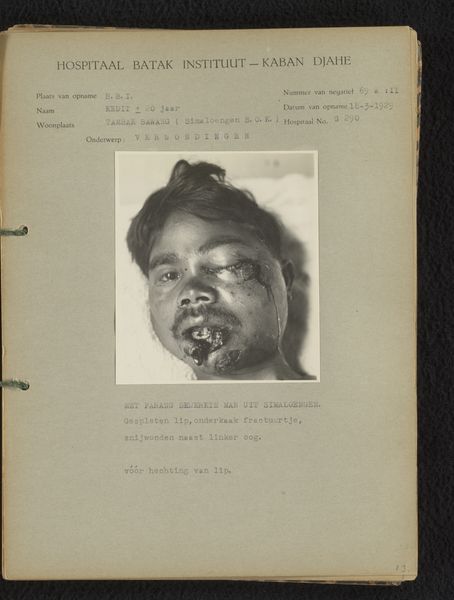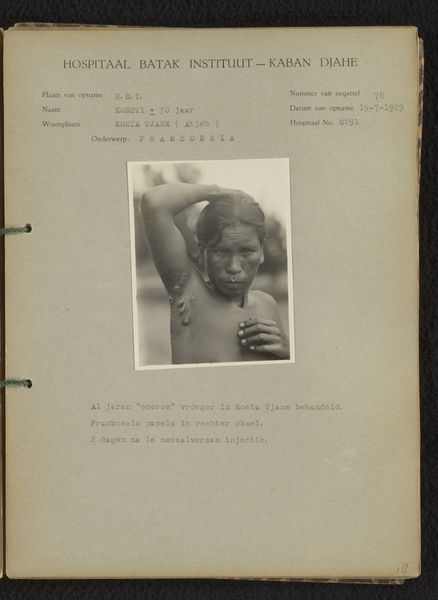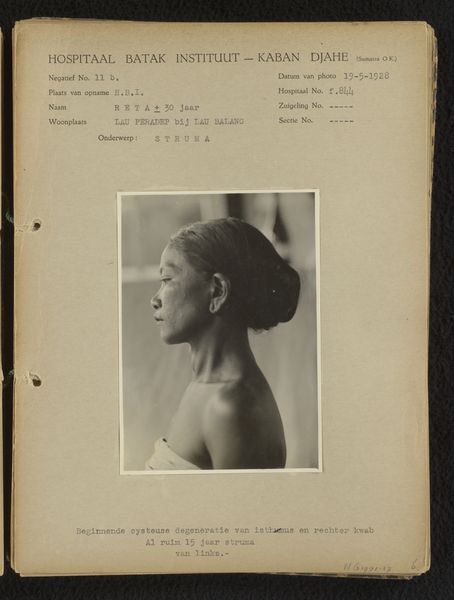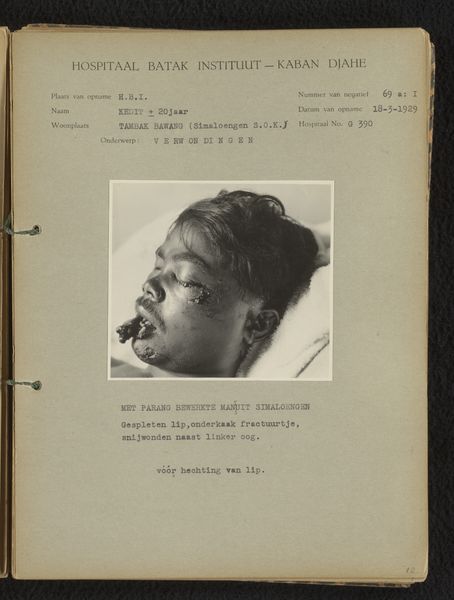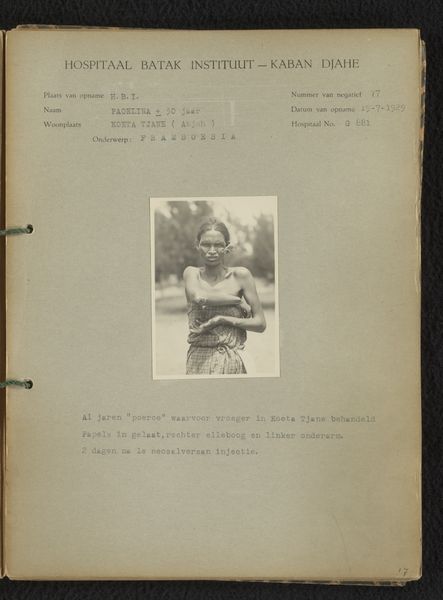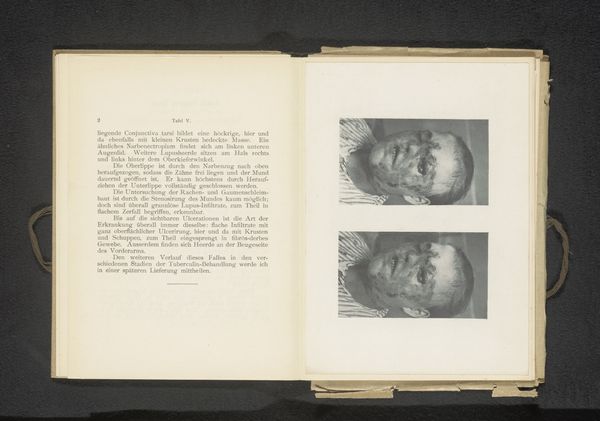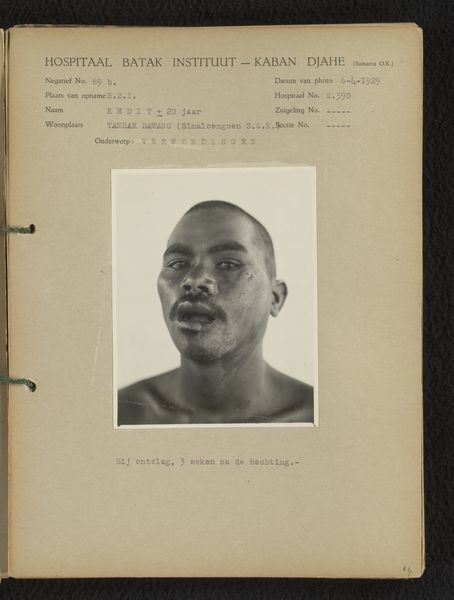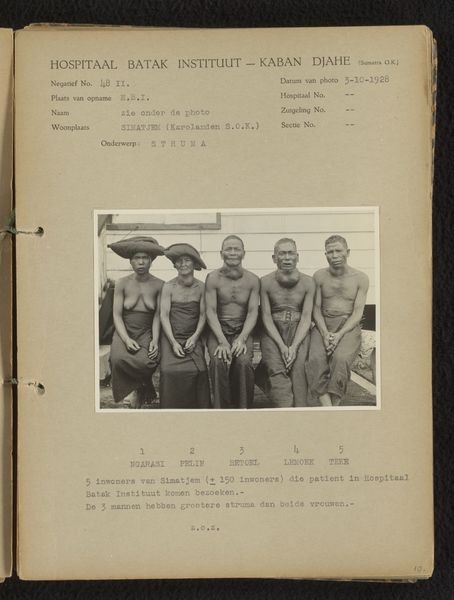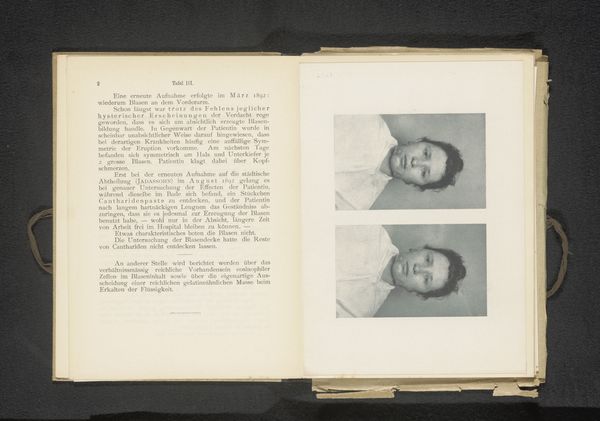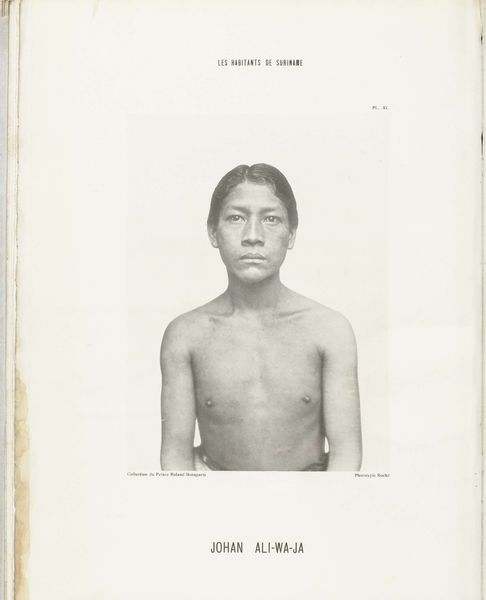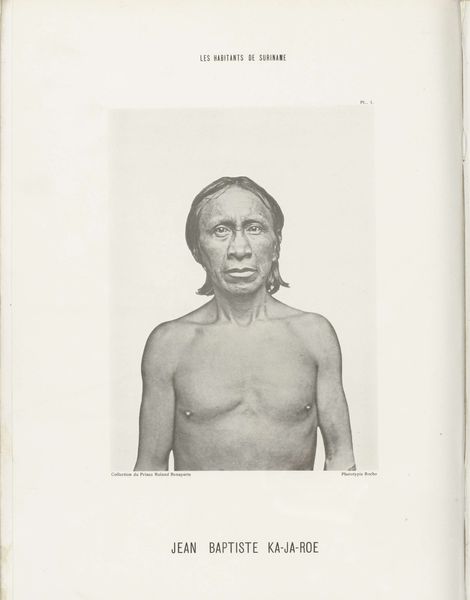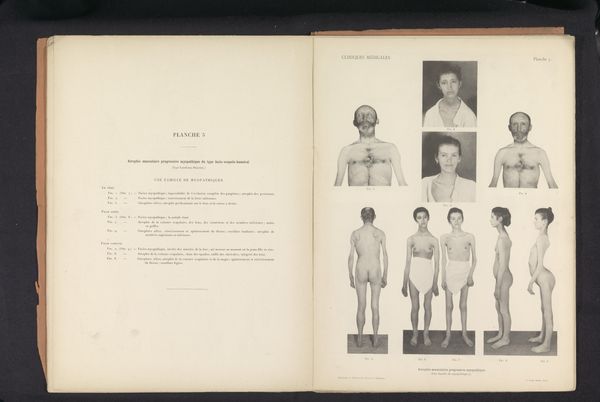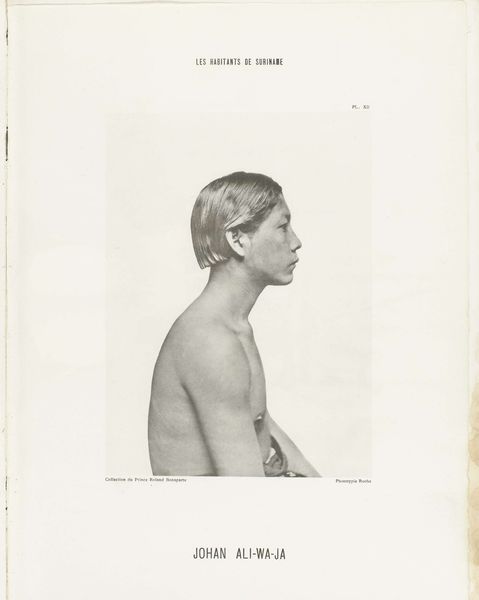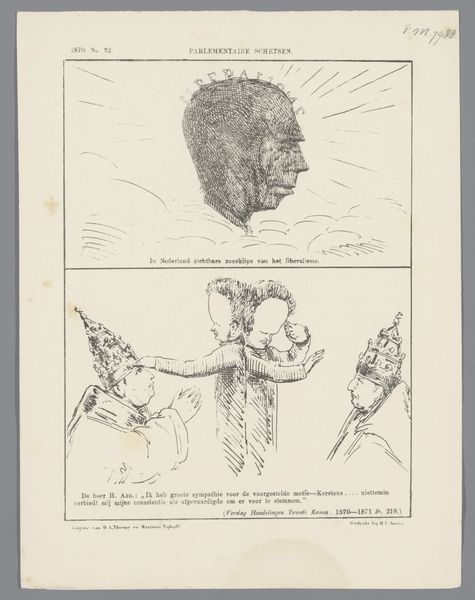
photography
#
portrait
#
african-art
#
photography
Dimensions: height 135 mm, width 103 mm, height 280 mm, width 210 mm
Copyright: Rijks Museum: Open Domain
Curator: This black and white photograph, entitled "Wang Carcinoom," originates from the Hospitaal Batak Instituut, dated 1929. Note the portrait style, reminiscent of ethnographic studies. Editor: My initial reaction is one of stark intensity. The harsh contrast amplifies the textures, especially the visible… well, the condition on the subject's face. It’s compelling, and unsettling, all at once. Curator: Indeed. Let's focus on the composition. The subject, named Soekibajak, fills the frame, demanding attention. The lighting emphasizes the topography of his face, revealing both vulnerability and resilience. It bears noting, however, the clinical, near-objective recording of Soekibajak, a tendency shared across visual production made during that era of European Colonialism in Indonesia. Editor: It's more than just documentation though, isn't it? I sense a flicker of something deeper. Look at his eyes, the angle of his head. There's a profound human presence, despite the… circumstance. Perhaps the Batak people viewed this disfiguration and this act of recording with cultural values in contrast to that of the doctors at the hospital, whose perspective might’ve focused solely on the medical aspect. Curator: Semiotically, the image functions on multiple levels. It’s an indexical sign pointing directly to the physical reality of Soekibajak’s condition but also, perhaps unintentionally, functions as an icon signifying human suffering and the complex relationship between medical observation and individual experience. Editor: It challenges us to confront our own discomfort, doesn't it? And, possibly, to see beyond the clinical and recognize the inherent dignity in the person. It feels almost like a call for empathy across the decades. Curator: Agreed. Its formalism is inextricable from its socio-historical context, creating a multilayered reading experience. Editor: Exactly. A single photograph speaks volumes. It’s clinical yet intimate; a slice of history imbued with enduring humanity.
Comments
No comments
Be the first to comment and join the conversation on the ultimate creative platform.
